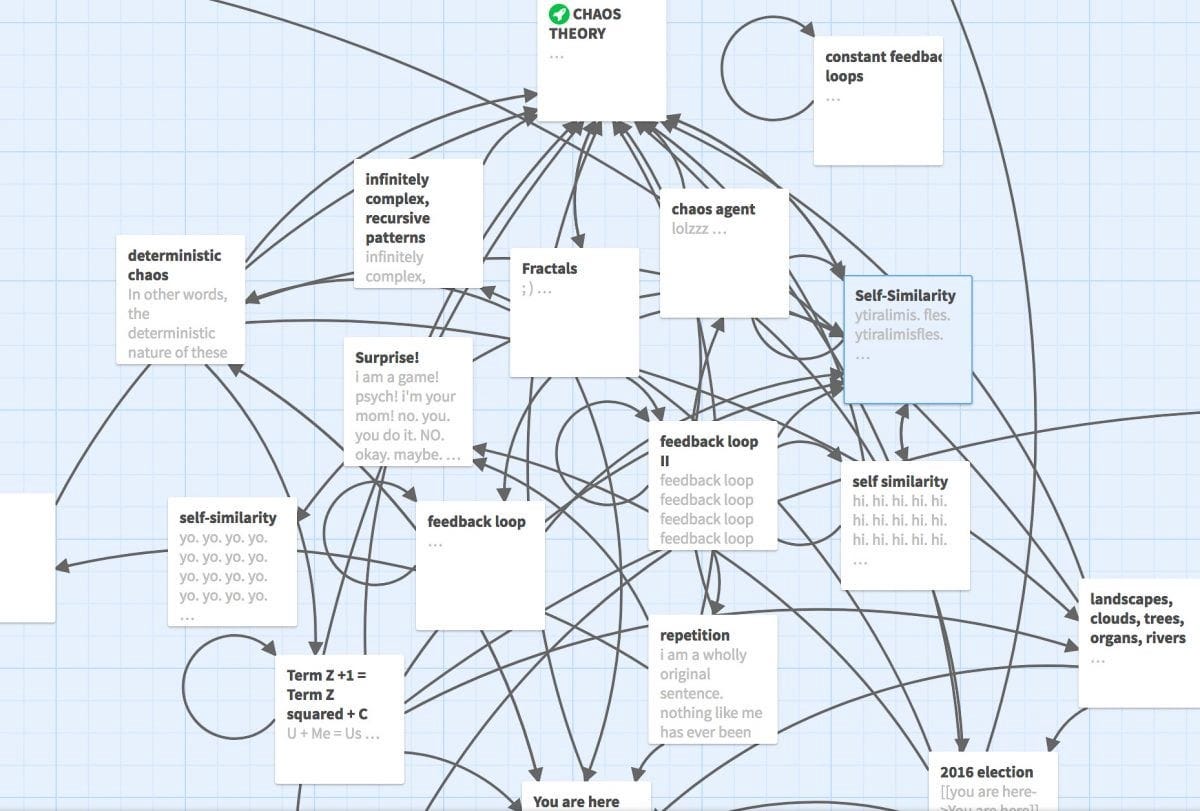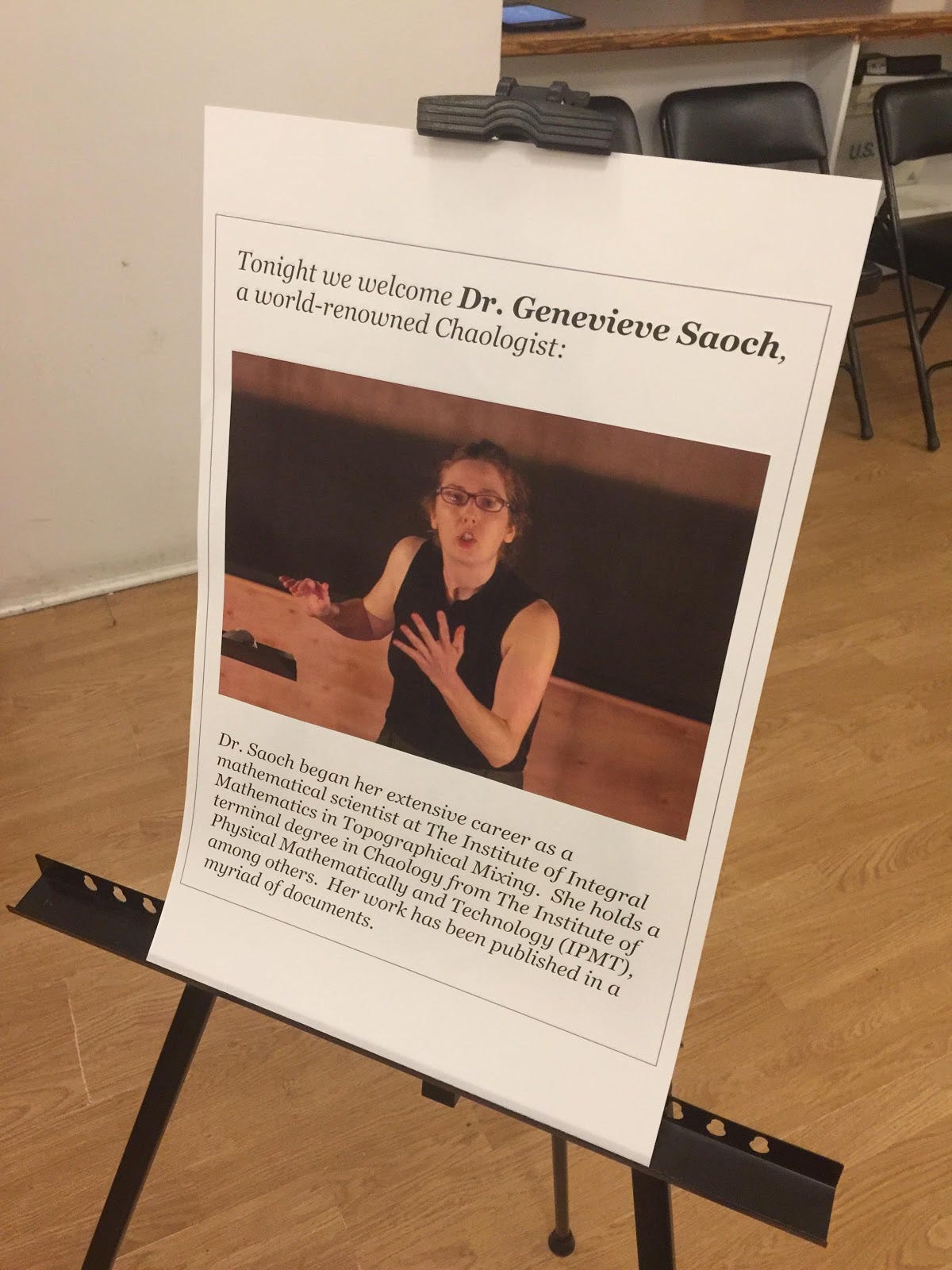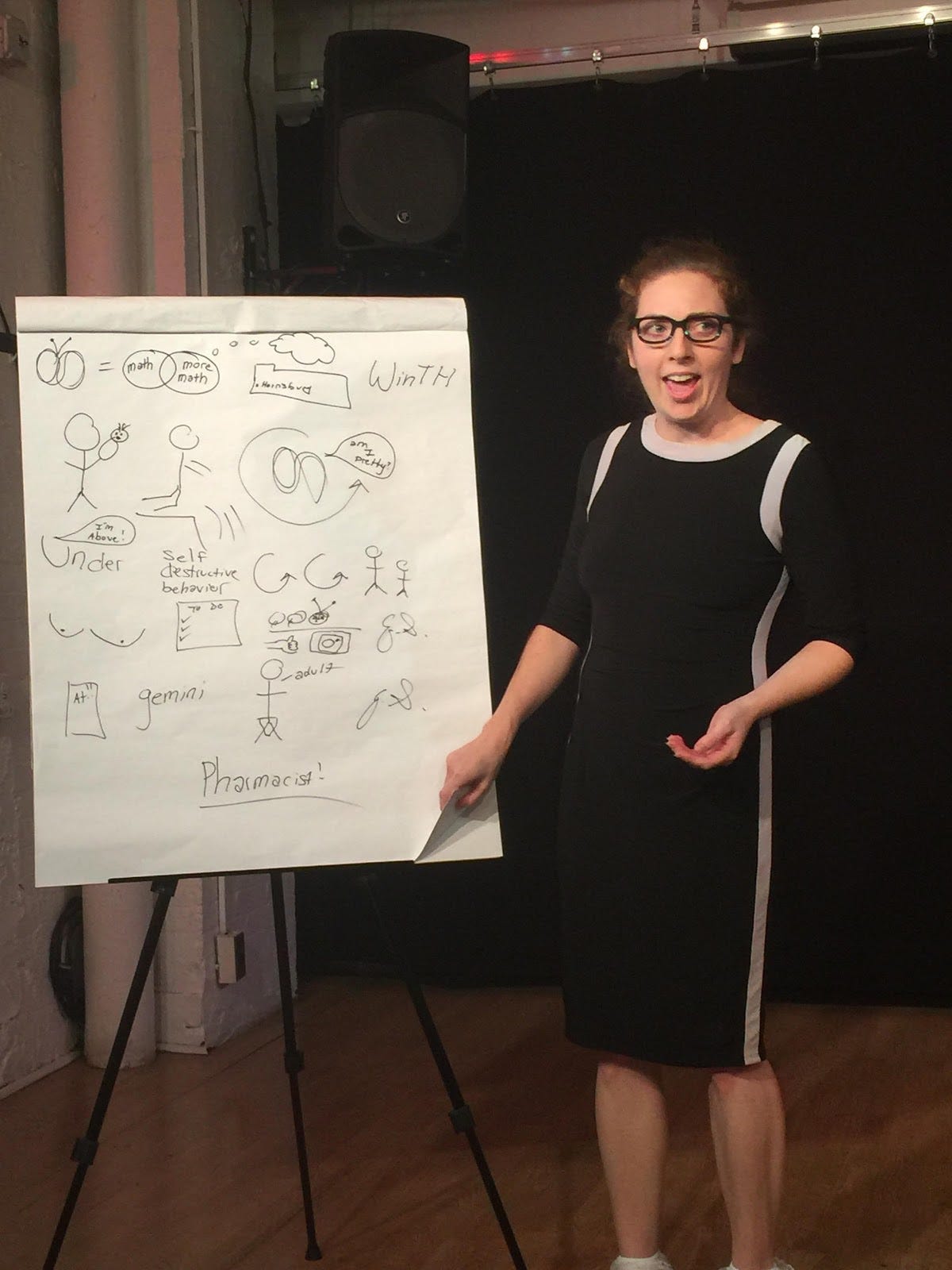
What happens when a TED talk goes way off the rails
“Welcome to the Greater Nazareth, PA Mathematical Scientists Meet Up, please sign in!”
The sign in sheet for the meet up has three columns: Name, Email and AIM Address/Name of first crush. With my name tag in place, complete with my chosen scientific area of expertise (musicology), we are instructed to make the most of the complimentary pretzels. The tone for the evening has been set.

We are guided to our seats and following an awkward introduction to the talk from our meetup organiser, we welcome our guest speaker for the evening, Dr. Genevieve Saoch. She is sporting a small black dress, high heels, and tall frilly white socks. Peeking through her dark framed spectacles, she barely reaches the top of the podium, which she uses as a shield to protect herself from the gaze of the intimate audience. She timidly thanks us for being here, and gently introduces her subject with all of the technical language possible. I am sure she looks out at a see of blank faces.
As she tries to re-explain the fundamentals of Chaos Theory, this time in layman’s terms, her entire demeanor shifts as she grows in confidence and excitement as she geeks out for us. Her delightful eccentricity is contagiously charming. She is every preconception of an uptight nerdy science professor who is clearly in love with her field. Her face lights up as she gets more and more into her talk, and her boldness grows as she begins to play with the audience.
The ensuing interaction with the audience starts very lightly, almost timidly at first, but as the evening progresses trust is built as the doctor realised she is surrounded by keen enthusiasts.
For instance, in one early experiment she calls on six volunteers to come and take part in an experiment, to help demonstrate her point. The task is simple: as a team, draw a perfect circle. However, there are four contradictory constructs which will determine how the task is completed, and we are each to pick one to follow.
They are:
- To assure the drawing of the perfect circle at all costs
- To avoid the drawing of the perfect circle at all costs
- To do the least amount of work while claiming to be doing the most
- To seduce the entire audience while a circle is or is not drawn
And of course, with each of us following our own individual instruction, the task goes precisely as well as you might imagine.
Get Edward Mylechreest’s stories in your inbox
Join Medium for free to get updates from this writer.
SubscribeSubscribe
Calling on volunteers throughout, we go through experiments to showcase fractalization, the butterfly effect, and strange attractors — all real world Chaos Theory terminology. Her interaction with the audience grows and grows into the a wildly chaotic scene by the finale. There are games, audience participation, and even a love song to one of the leading professors in the field, Dr, Edward Lorenz. Hilarity ensues.
The portions of multiplayer game theater are hilarious yet surprisingly poignant as we as the audience were presented with tasks that spoke to the very nature of ourselves. All the while we are being tricked into learning. (If only my physics teacher at school had attended one of these meetups.)

The humor of the evening is surreal in nature, and is incredibly quickfire. Blink and you’ll miss lines being thrown around with no care as to whether or not they are registered by the audience. A passing comment one moment will come back ten to fifteen minutes later to serve as a punchline. Chekhov’s gun comes to mind often, particularly with an brief mention of a mathematical tattoo that had always been an aspiration for the doctor.
The evening is a mix of TED talk, stand up comedy, and math seminar; by the end I found myself in the midst of utter beautiful chaos, as we the audience are pushed to make choices, to share deep personal secrets, and to let mayhem reign over the final act of this performance. I found myself with my hand covering my open mouth, as I was shocked and delighted by the quick fire interactions and revelations my colleagues were sharing in the final moments of the meetup. It was wonderful to behold.
Writer and performer Jessica Creane delivers a phenomenal performance, as the initially mousy doctor transforms into a crazed being, full of ecstatic and infectious joy. She sheds all her inhibitions, quite literally, as at one point she sheds all of her clothes, as her tightly wound character unwinds into the chaotic being she truly is. The dedication to the character, in her scripted talk and in her improvised interactions is remarkable.
So if you are willing to have some fun and to embrace the chaos, I would heavily recommend attending one of Dr. Saoch’s lectures in the near future.
Chaos Theory’s FringeNYC run has concluded but you can learn more about the experience on the iKantKoan Games site.
NoPro is a labor of love made possible by:

…and our generous Patreon backers: join them today!
In addition to the No Proscenium web site, our podcast, and our newsletters, you can find NoPro on Twitter, Facebook, YouTube, Instagram, in the Facebook community Everything Immersive, and on our Slack forum.


















Discussion